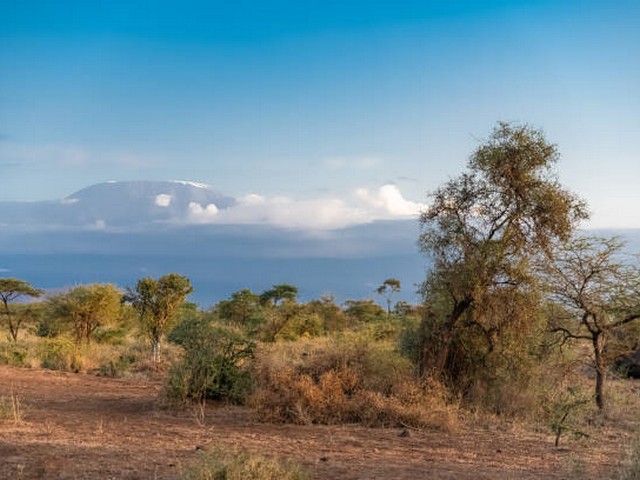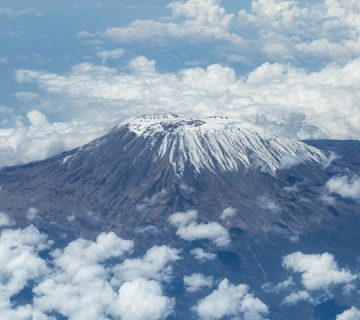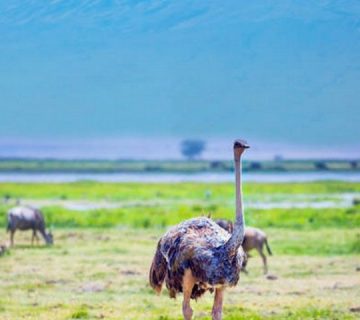How To Shoot Wildlife During Kilimanjaro Treks: A Photographer’s Paradise
As you gear up for the adventure of a lifetime with Kilimanjaro Centre for Trekking and Ecotourism (KCTE), imagine capturing breathtaking images of wildlife against the backdrop of Africa’s highest peak. Whether you’re a seasoned wildlife photographer or a nature enthusiast with a new camera, Mount Kilimanjaro offers a unique canvas for your photographic pursuits. In this comprehensive guide, we’ll walk you through the essentials of shooting wildlife during your Kilimanjaro trek, turning each moment into a lasting memory.
Preparing for Your Photographic Journey
Choosing the Right Gear
Before you embark on your adventure, selecting the right photography equipment is crucial. A good DSLR or mirrorless camera with a telephoto lens (at least 200mm) is ideal for capturing distant wildlife. Additionally, consider bringing a wider lens for landscapes and extra batteries and memory cards, as charging facilities can be limited on the mountain.
Understanding the Wildlife
Mount Kilimanjaro is surrounded by a mosaic of montane forests, alpine meadows, and arid plains, each hosting diverse species. Familiarize yourself with the behavior and habitats of animals like the blue monkey, colobus monkeys, and various bird species. Knowing what to expect helps you anticipate their movements and increases your chances of capturing stunning photographs.
On the Trail: Techniques for Capturing Wildlife
Mastering the Light
On Mount Kilimanjaro, the golden hours of early morning and late afternoon offer the best natural lighting for wildlife photography. The soft, warm hues enhance the natural colors of the landscape and the creatures that inhabit it. Practice adjusting your camera settings to adapt to the changing light conditions throughout the day.
Staying Stealthy and Respectful
Animals are naturally wary of humans, so it’s important to keep a low profile. Move slowly and quietly, using natural cover when possible. Always maintain a respectful distance to avoid distressing the wildlife. Remember, the safety and well-being of the animals and the environment are more important than any photo.
Patience Pays Off
Wildlife photography is as much about patience as it is about skill. Spend time observing the behavior of the animals and wait for the perfect shot. Sometimes, this means sitting quietly for hours. Those who wait are often rewarded with the most compelling and natural images.
Capturing the Majestic Scenery
Incorporating the Landscape
Mount Kilimanjaro isn’t just about the wildlife; the landscapes themselves are breathtakingly photogenic. Use wide-angle shots to capture the vastness of the terrain, including the towering mountain, which makes a stunning backdrop for your wildlife photography. Consider using a smaller aperture (high f-number) to keep both the foreground and background sharply in focus.
Playing with Perspectives
Get creative with your angles and perspectives. Try shooting from a low point to give your subject a sense of grandeur against the massive landscapes. Alternatively, find higher ground to depict the expanse of the ecosystem and include various environmental layers in your composition.
Post-Trek: Editing and Sharing Your Photos
Editing Best Practices
Post-processing is a key step in wildlife photography. Use editing software to adjust exposure, contrast, and color balance to bring out the best in your images. However, keep adjustments subtle and strive to maintain the natural authenticity of the scenes you captured.
Sharing Your Story
Once you’re back from your trek, share your experiences and photographs. Social media platforms, photography forums, and blogs are great places to showcase your work, inspire others, and reflect on your journey up the majestic Mount Kilimanjaro.
Join Us for an Unforgettable Adventure
At Kilimanjaro Centre for Trekking and Ecotourism (KCTE), we specialize in creating tailor-made experiences that blend adventure with ecological mindfulness. By booking your Kilimanjaro climb with us, you’re not just embarking on a trek; you’re stepping into a world of awe-inspiring beauty that begs to be photographed.
Our expert guides will ensure that you make the most of every moment, whether it’s capturing the early morning mists over the rainforest or a rare bird in flight. We are committed to sustainable tourism practices that protect the environment and support local communities.
Frequently Asked Questions
Can I rent photography equipment from KCTE?
While we do not offer rental services directly, we can recommend reputable rental outlets where you can hire high-quality photography gear for your trek.
What is the best time of year for wildlife photography on Kilimanjaro?
The dry seasons, from late June to October and from late December to mid-March, offer the best visibility and animal activity for wildlife photography.
Are there photography-focused treks available?
Yes, at KCTE, we offer specialized photography treks that focus on giving participants the best vantage points and times of day for photography, guided by professionals.
How can I ensure the safety of my equipment during the trek?
We recommend carrying your equipment in a sturdy, waterproof bag. Use silica gel packets to avoid moisture damage, and always have your gear close to you.
Embrace the challenge and the beauty of Mount Kilimanjaro with Kilimanjaro Centre for Trekking and Ecotourism. Capture the spirit of Africa, its wildlife, and its landscapes through your lens. Book your climb today and take the first step towards a journey filled with adventure and timeless photographs.




